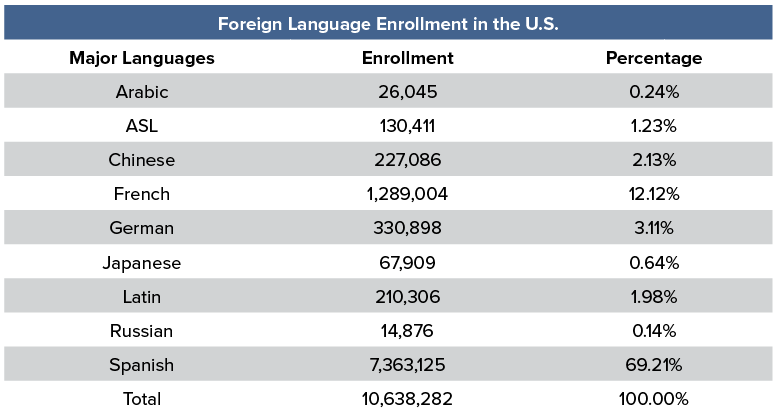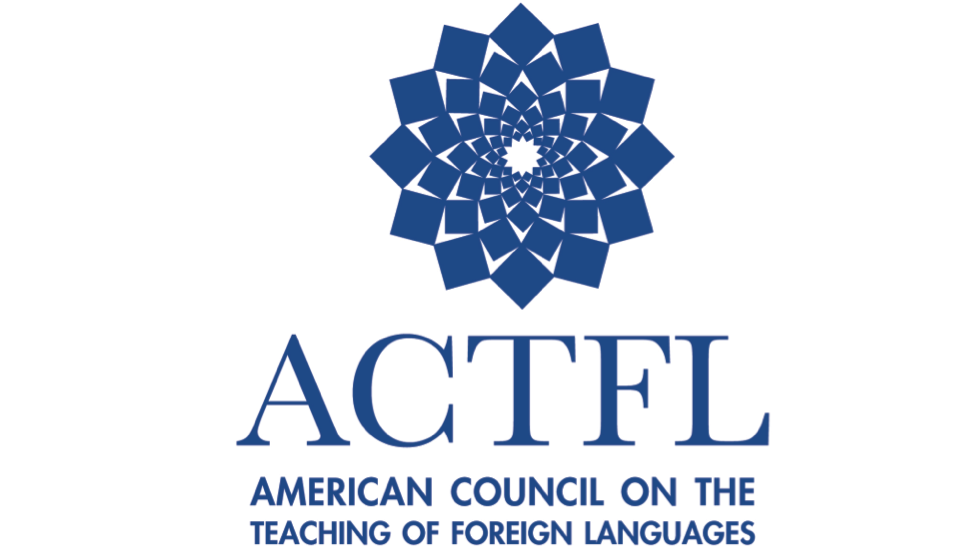Language Research - FLE - State of Language in the US
The National K-12 Foreign Language Enrollment Survey collects and analyzes K-12 foreign language enrollment data as it currently stands in the United States, where more than 21 percent of households speak a language other than English at home.
The State of Language in the United States
The National K-12 Foreign Language Enrollment Survey collects and analyzes K-12 foreign language enrollment data as it currently stands in the United States, where more than 21 percent of households speak a language other than English at home. According to the survey, approximately 20 percent of the K-12 population is enrolled in foreign language courses.
Sponsors and Partners
Sponsored by The Language Flagship at the Defense Language and National Security Education Office (DLNSEO), the The National K-12 Foreign Language Enrollment Survey and Report was conducted by American Councils for International Education (and its research arm; American Councils Research Center or ARC) in collaboration with the American Council on the Teaching of Foreign Languages (ACTFL), the Center for Applied Linguistics (CAL), and the Modern Language Association (MLA).
The DLNSEO grant award was administered by the Institute of International Education (IIE) in cooperation with Bryn Mawr College. The survey data and report do not necessarily reflect the position or policy of IIE or the Government; and no official IIE or Government endorsement should be inferred.
To update data for your school, district or state, email research@americancouncils.org.
Participating Organizations
During 2014-2015, American Councils and CAL collected secondary data on foreign language enrollment, which included a census of all US foreign language enrollments in grades 9-12 and a survey of a subsample of K-8 schools; MLA provided 2013 data on foreign language enrollment in higher education.
Foreign language education in the US, particularly at the K-12 level, continues to experience dynamic changes in terms of numbers and locations of programs and program designs. A number of states are involved in major efforts to support K-12 language education, while locally decisions are being taken to eliminate or consolidate programs in specific languages.
Recent evidence points to a renewed interest in language immersion, particularly dual language immersion, as a way to more effectively incorporate second language learning into the curriculum for native and non-native speakers of English.
This projects maps and documents such developments at the K-12 level, showing that approximately 20 percent of the K-12 population is enrolled in foreign language courses. The foreign language education includes reporting on language courses taught; types of language programs (traditional, blended or immersion); student enrollments; levels of instruction; and certifications.

*Total: total enrollment for all foreign languages (including languages above, Greek, Hindi, Korean, Persian, Portuguese, Swahili, Turkish and Others)
*Source: American Councils for International Education, American Council for the Teaching of Foreign Languages, Center for Applied Linguistics: The National K-12 Foreign Language Enrollment Survey (2017)





